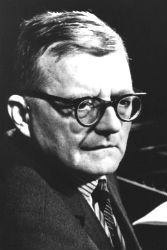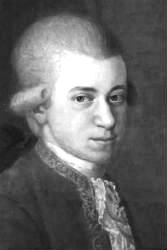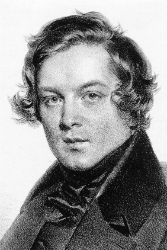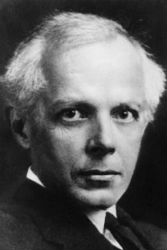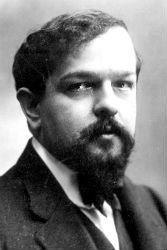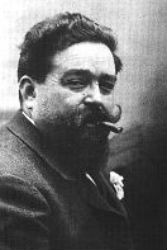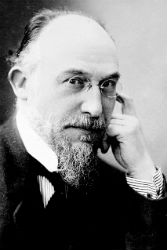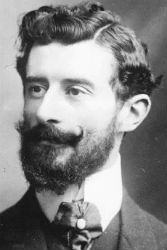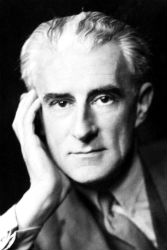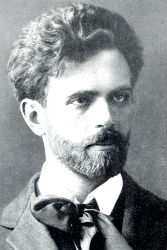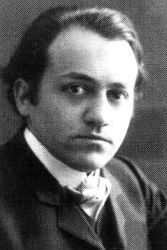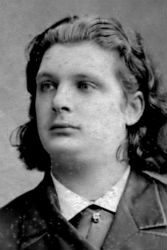BRAHMS
JOHANNES BRAHMS: CLASSICAL FORM IN THE ROMANTIC ERA
Alfred Einstein on Brahms: A Composer Born Too Late
From Alfred Einstein, Music in the Romantic Era (New York: W.W. Norton & Co., 1947) pp. 149-154. All images courtesy of the Brahms-Institut.
The composer who is really antipodal to Liszt, not to Wagner, is Johannes Brahms. Liszt was a composer who scorned tradition and in the most real sense of the word stood irreverently before the past, even though he was too good a musician not to recognize the greatness of individual masters. Brahms was becoming more and more conscious of the possibility of finding models in the past, and was reaching back further and further into it. Liszt was a rhapsodist; Brahms adhered to acceptable, strict form, from beginning to end. Liszt proclaimed the fusion of music and poetry; Brahms kept secret all his impulses (the few inscriptions that exist in his works tell us little more about their real content than do the nicknames ‘Kegelstatt’ Trio and the ‘Sparrow’ Mass in Mozart). Liszt was the most European or cosmopolitan or Parisian of all musicians; Brahms was so very national, so much in the mainstream of the German tradition as created by Bach, Beethoven, Schubert, Schumann, and the German folk song, that his effectiveness can never go beyond certain limits. Liszt was a child of the culture of his time, a culture which became a burden to him; Brahms was one of those rare 19th-century musicians who were born of simple musician fathers, yet appropriated to themselves all the culture of their time.

Johannes Brahms, 1853

Johannes Brahms, Leipzig, 1853
Brahms is the greatest representative of the musical Romantic movement, which sought to come to terms creatively with the past, unable to disregard Bach and Handel, Haydn and Mozart, and—above all—Beethoven. Liszt did not write a single chamber music work; Brahms tried to show that it was still possible to write sonatas, trios, and quartets. Wagner looked upon the Ninth Symphony as the closing work in a development; Brahms wrote serenades (though not, of course, serenades in the 18th-century sense of the term) and symphonies.
In so doing, he was well aware of the danger of being a composer born too late, no longer belonging to those happy times when the musician could create at the order of a society to which he belonged, and when the individual still was borne along by the spirit of the community. Wagner and Liszt were revolutionaries. They created against their times, and only the powerful force of will in Wagner was responsible for the fact that he did not succumb, like Liszt, whose creative activity ended in complete resignation. Wagner and Liszt were completely incompetent in professional, ‘bourgeois’ positions. Wagner’s six years as Capellmeister at Dresden ended in complete revulsion, flight, and exile. Liszt’s ‘special’ Court-Capellmeistership in Weimar ended with a complete surrender of arms before the Philistine world and with the deepest disgust. Brahms, on the other hand, was hurt to the quick and bore a grudge all his life over the fact that his native city, Hamburg, had not offered him the bourgeois position to which he believed he had some claim and for which his short-lived position as director of the Viennese Society of the Friends of Music (1872-75) offered no adequate substitute. Had he been born in the Middle Ages, he would have been a deeply satisfied member of the musicians’ guild. In general he did not feel that his status as a free artist was entirely a piece of good fortune, even if his success made it possible for him to spend the last twenty years of his life in the city of Mozart, of Beethoven, and of Schubert.

Johannes Brahms, Hamburg, 1862

Johannes Brahms, Vienna, 1867
Brahms’s position as a Romantic was due to his feeling that he was a posthumous musician. He did not so consider himself from the very beginning. He began as a genuine Romantic, with a period of storm and stress, with impetuous youthfulness, like Schumann. As a matter of fact, Schumann—having himself become a ‘master’ and feeling that he had failed in his task—greeted the youthful Brahms enthusiastically. The three Piano Sonatas—the first and last that Brahms ever wrote—are genuine examples of ‘Wunderhorn’ Romanticism, and enter the lists with Beethoven, without whose Opus 106 the first movement of Opus 1 would not have come into being. The Scherzo in E-flat minor, to be sure, is Chopinesque, but free from all the shadings that might recall the salon. And with his First Piano Concerto in D minor (Op. 15) he ventured a plunge into the great, the symphonic, which was greeted with as little understanding on the part of his contemporaries as was Wagner’s Tristan. When Brahms, on January 27, 1859, presented the work to a Leipzig audience, the failure could not have been more complete.
Brahms felt this failure deeply, but it is doubtful if such an experience alone was responsible for his reconsideration of his historical position. He had neither the desire nor the ability to abandon the paths that had been beaten by the very great masters of two or more centuries. He was not able to write operas like Wagner’s, nor willing to write rhapsodies like Liszt’s; and he was a much more responsible musician than Schumann. The transformation must have taken place in him before he had arrived at the age of twenty-four. In a letter to Joachim, with whom about this time (June, 1856) he was exchanging works in strict style, fugues and canons, there is a significant passage: ‘I occasionally reflect on the variation form, and find that it must be kept more strict, more pure.’ Yet the newer composers—among whom he includes himself and Joachim—’rummage about over the theme more. We keep anxiously to the melody; we do not treat it freely. We really create nothing new out of it; instead we only load it down.’ However one may interpret these misgivings, at least they indicate the yearning of a Romantic subjectivity towards the strictness and formal sense of the old masters. More and more Brahms came to hate every manifestation of willfulness in creative activity; he yearned more and more for the sureness which he found in the masterpieces of the past, in Beethoven, in Mozart, and—above all—in Bach.

Johannes Brahms, Vienna, ca.1866-67

Johannes Brahms, Vienna, ca.1876-77
More and more with the passage of time, the past came to seem in his eyes a paradise lost. And if one seeks for the musician whom Brahms most deeply considered to have been fortunate in not being born too late, one would have to name not Mozart or Beethoven, but Schubert. The fact that Schubert had lived in Vienna was certainly the greatest enticement for Brahms to breathe that same air. His Piano Trio in B major, Op. 8, is a composition of Schubertian exuberance, Schubertian naïveté, Schubertian directness of communication. Nothing is more characteristic of Brahms’s transformation than the fact that he rescued this very opus by later reworking it—thirty-seven years intervening between the first version (1854) and the second (1891)—and subjected it to his mature demands. I quote and subscribe to what Hans Gil says in his notes to the complete edition: ‘A comparison of the two versions would yield material of unexcelled interest for a study in the technique of composition. The reworking lays bare with relentless critical acumen every weakness of the youthful work and, although the outlines are preserved, has the effect of a new creation. Thus, both as a creative achievement and an expression of an unsurpassable objectivity towards a composer’s own work, it is a perhaps unique existing bit of testimony to the character of the artist and the man.’ What impelled Brahms to this reworking of the youthful composition was the feeling of responsibility before the demands of Classical form; the thoughts that led him in so doing may be brought together into two words: concentration and simplification.
The transformation of Brahms from an adherent of the Storm and Stress school, from an ‘involuntary’ to a ‘voluntary’ creator, to a musician who stands always in a certain relation to other musicians, is revealed in still another essential trait, in his attitude towards folk song. He is hardly to be thought of without his almost mystical veneration of everything created by the ‘folk’: in this respect he was a ‘Wunderhorn’ musician. His veneration remained constant his whole life long: even at the age of twenty he brought together from Schumann’s library everything in the nature of folk-like melodies that he could find, and his interest in these treasures of seemingly involuntary origin induced him later to concern himself, like Liszt, with a stock of melodies not always free from vulgarity—that of the Hungarian gypsies. In his first, ‘involuntary’ period, he drew folk song into the circle of his discovery and made it an element in his creative activity: the slow movement of his Piano Sonata Op. 1 is a series of variations on a supposedly Lower Rhenish folk tune, whose minor is at the end dissolved into blissful major; in the other two youthful piano sonatas, too, something folksong-like is the seed of the slow movements, and thereby of the whole work. Later, at the age of sixty-one, in his German Folk Songs, Brahms once again arranged the song from his Op. 1: but now it had become something sacrosanct to him; to the melody he added only an accompaniment. No longer did he encroach upon it; he had perceived that he, as a composer ‘born too late,’ could no longer be so ingenuous as could the old, great masters.

Johannes Brahms, Vienna, 1882

Johannes Brahms, Berlin, 1889
Hugo Wolf considered Brahms a mere copyist, and was willing to admit only one solitary virtue of his talent—‘that of artful workmanship. Herr Brahms knows how to vary a given theme as no one else does. His entire creative output, however, is only a great variation on the work of Beethoven, Mendelssohn, and Schumann.’ Now, the youthful composer, who himself had already written a D-minor Quartet, might have also added many other masters of the past whom Brahms had ‘written variations on,’ particularly Schubert. But it nevertheless seems clear that Brahms was no mere copyist.
Brahms’s relationship to the earlier composers may also be differently expressed. Thus Philipp Spitta wrote:
The musical politicians of our day call Brahms a reactionary. Others say that Brahms demonstrates practically that in the Classical forms something new can still be said. Not still, but always—so long as our music remains, this will be the situation. For these forms are derived from the very inner nature of this music, and in their outlines could not have been more perfectly conceived. Even those composers who think that they have broken them, and thereby have accomplished an act of liberation, avail themselves of these forms in so far as they still have any desire at all to achieve a satisfying impression. They cannot do otherwise, so long as composition and contrast in music remain. They only do it much worse than does he who enters into the inheritance from the past with full awareness and with the intention of employing it in the service of the beautiful. Power, of course, is required; moreover, many ways lead to the shrine. Weber and Schubert, Schumann and Gade have in many ways loosened Beethoven’s firm construction and are, in the matter of musical architectonics, unquestionably lesser masters. They seek to make up for this deficiency through other, magnificent characteristics; and no one to whom music is more than a mere sort of arithmetic will be so pedantic as to look askance at their weaknesses. But the assumption that their willfulnesses are the guideposts to new and higher goals is false. The foundations must remain fixed, and each one builds upon them according to his needs. After Brahms, others will come who will compose in ways other than his. His endeavor was towards concentration and indissolubly firm union, using all the means that are proper to the art of music as such.

Johannes Brahms, Berlin, 1895

Johannes Brahms, Ischl, 1895
The Romanticism in Brahms’s work rests upon his relation to the paradise lost of Classical music, and he makes no secret of it for anyone who has ears to hear. This relation gives his work charm and attractiveness, with no loss in individuality. The String Sextet in B-flat (Op. 18) would never have come into being without the model of Schubert; in fact, it belongs rather to those compositions in which Brahms is still trying to compete with the classic master of the Romantic era on the same plane. The Waltzes for four hands, Op. 39, Schubertian as they are, already show traces of nostalgia for a vanished happiness. The Violin Concerto would not have found its inner form without Beethoven’s example in this genre. The finale of this Concerto, somewhat ‘all’ongarese,’ brings us to the observation of how often Brahms, like Haydn, Beethoven, or Schubert, tried to make one or another of his movements more elemental by national rhythmic or melodic coloring and thus to approach that paradise lost of music. In contrast to Schumann, Brahms concerned himself for a long time with writing quartets, and in so doing he entered the ranks more with Haydn and Mozart than with Beethoven. About ‘originality’ he never greatly troubled himself, and never avoided the formula—in full accord with the old masters, who knew that it was impossible to achieve a style without formulae. The only difference was that he, with his attention directed backwards, did not exert himself to create any further new formulae.
After long consideration he proceeded to the symphonic form—unless one wishes to consider his fateful First Piano Concerto a symphony. After trying out his powers in two Serenades, he set to work on his First Symphony, Op. 68. And what a significant development from this First to the last, the Fourth Symphony! A later admirer of Brahms, deserted from the camp of Liszt and Wagner, Hans von Bülow, coined an unhappy phrase for this C-minor Symphony by saying that it was ‘the Tenth.’ It stands only in a certain relationship to Beethoven; and the quality that places it in the genuine ‘Classical’ succession consists only of the concentration and masterfulness of structure, particularly in the first movement. The Second Symphony is pastoral in character. The Third—the most personal of all—is pseudo-heroic. And the last one proceeds from the balladesque to a note of fateful resignation, to a medieval Dance of Death in form of a Chaconne. That is the way taken by Brahms the Romantic: the fiery beginning, the perception of the greatness and unaffected happiness of the past, the sorrowful renewal of this happiness, and the resignation of the man born too late. Along this road, the concentration, the simplification, the masterfulness become greater and greater, right up to those farewell works, among which the final piano pieces and the Clarinet Quintet speak out in the clearest accents.

Johannes Brahms, Vienna, 1896

M. Musgrave, Cambridge Companion to Brahms

Alfred Einstein, Music in the Romantic Era

Jan Swafford, Johannes Brahms: A Biography
JOHANNES BRAHMS IN ‘MARA, MARIETTA’
FROM ‘MARA, MARIETTA’
Part One Chapter 3
And now shall I show how, with your renditions of numbers one and six of Brahms’ Hungarian Dances, you had the audience eating from your hands? No, I’ll simply remark that your impatience at the applause revealed that your hands had better things to do: The very first note of the next piece announced the fire to come.
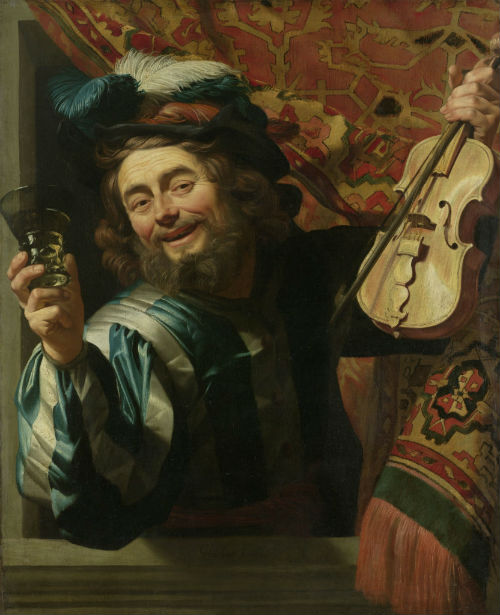
Gerard van Honthorst, The Merry Fiddler, 1623
VIDEO: TWO BRAHMS PERFORMANCES & MUTTER/ORKIS IN CONVERSATION
Anne-Sophie Mutter & Lambert Orkis discuss Brahms
Anne-Sophie Mutter & Lambert Orkis play Brahms
Brahms Piano Concerto no.2 in B flat major, op.83
ALBUMS: THREE FIRST-RATE BRAHMS PERFORMANCES

Riccardo Chailly, Brahms, The Symphonies

Mutter & Orkis, Brahms, Violin Sonatas

Nelson Freire, Brahms Piano Works, Decca

